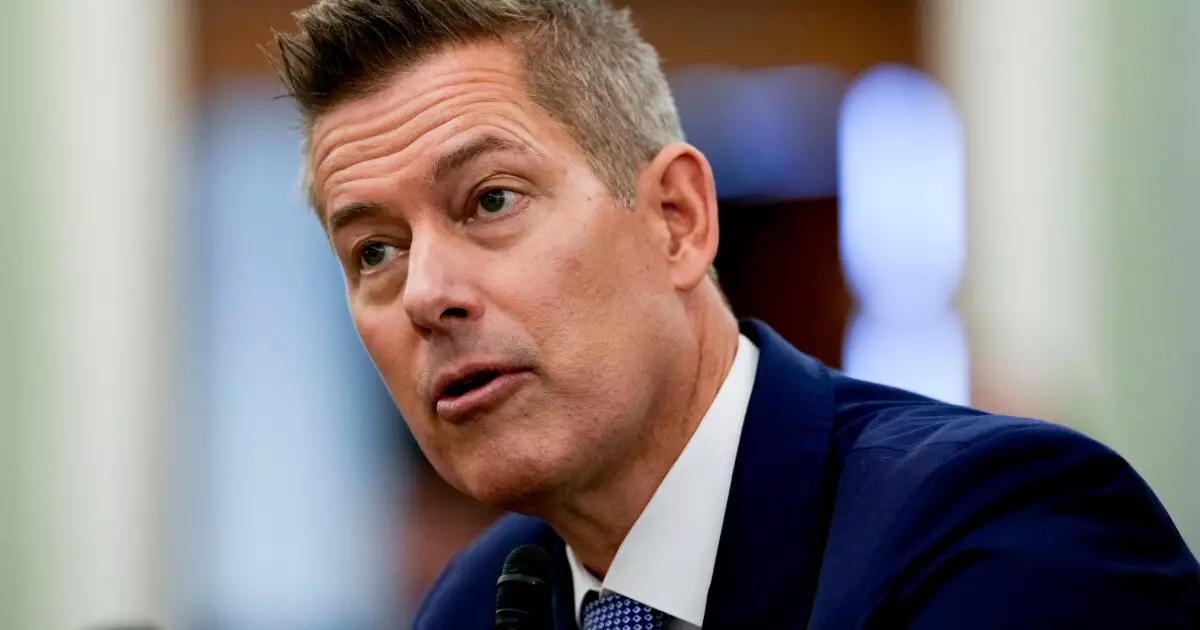As the Biden administration wraps up its funding efforts, public transit systems across the United States find themselves cornered by an oppressive maze of regulations. This isn’t merely bureaucratic red tape; it’s a living testament to the inadequacy of our federal structure to grasp the urgency and vitality of urban transportation. U.S. Department of Transportation Secretary Sean Duffy’s recent missive to Janno Lieber, the chair of the New York Metropolitan Transportation Authority, serves as a stark reminder that compliance has become a priority over efficiency and innovation. There’s an expectation for safe and clean environments, reduced crime, and fare evasion—requirements that seem to indicate a lack of faith in the entities now tasked with managing such vital services.
In a country where the efficiency of public transport can make or break economic mobility for countless citizens, such emphasis on punitive measures risks exacerbating the very problems they aim to solve. It isn’t enough to say transit authorities must comply with federal directives; we ought to question whether these requirements reflect a genuine understanding of urban challenges or merely signal a desire to tighten control. To treat a complex ecosystem of public transport like a factory line is to devalue the very purpose such systems serve.
Financial Challenges Loom Large
The financial landscape for public transit is undoubtedly grim. A report from the American Public Transit Association highlights that, while the recent continuing resolution allocates a marginal increase in funding, it’s hardly a lifeline for systems reeling from post-pandemic ridership plummets. The projected funding of $20.9 billion for the fiscal year 2025 is a pittance when considering that many transit authorities are staring down budget shortfalls in the hundreds of millions. Take the Southeastern Pennsylvania Transportation Authority, for example, where former general manager Leslie Richards has noted a staggering $200 million deficit.
This isn’t just a matter of numbers; it’s about the very existence of public transportation in cities where lives depend on these services for employment, education, and social mobility. Cities—especially those labeled as sanctuary cities, like Chicago—are poised for further despair. The looming threat of federal funding freezes puts critical infrastructure projects in jeopardy. The city’s $12 billion O’Hare expansion, reliant on almost $400 million in federal backing, illustrates a precarious position where transit-focused initiatives could stall indefinitely.
The Perils of Policy Changes
Policy shifts under previous administrations have created an uneasy tension. A chilling directive from the Trump administration will haunt discretionary transit programs for years to come. Polly Trottenberg, a former deputy secretary of transportation, denotes an alarming trend—one administration’s intervention can unravel projects already greenlit through a competitive process. This unsettling control over previously secured grants reflects a deeper issue: the peril that our transit infrastructure faces when funding decisions become laced with political motivations.
Moreover, these abrupt policy changes create an existential uncertainty for transit agencies that have always functioned within the relative predictability of grant cycles. To impose a blanket freeze or cancellation of projects based on untouched grant agreements further complicates already inadequate funding streams. Transit agencies must now navigate an unpredictable future where past promises are rescinded based on shifting political landscapes, leaving them in a vulnerable position.
The Irony of Public Safety and Crime
The irony that underpins these recent directives is palpable—while public transit agencies are tasked with reducing crime and promoting safety, the same federal letters create an environment fraught with uncertainty. The safety of commuters hinges not only on fare enforcement but also on overall reliability and the extent to which communities can trust their transit systems. Increased scrutiny can only create a stifling atmosphere for innovation and morale, where solving crime becomes a prerequisite for funding rather than an outcome of service excellence.
Transit authorities require more than just guidelines instructing them on compliance. They need supportive frameworks that allow them to innovate and adapt proactively to community needs. Until we pivot from a punitive to a collaborative approach, we risk losing invaluable transit resources that once propelled urban America forward. In the desired equilibrium between funding, safety, and innovation, perhaps the only certainty is that our public transit systems are in for a tough ride ahead.

